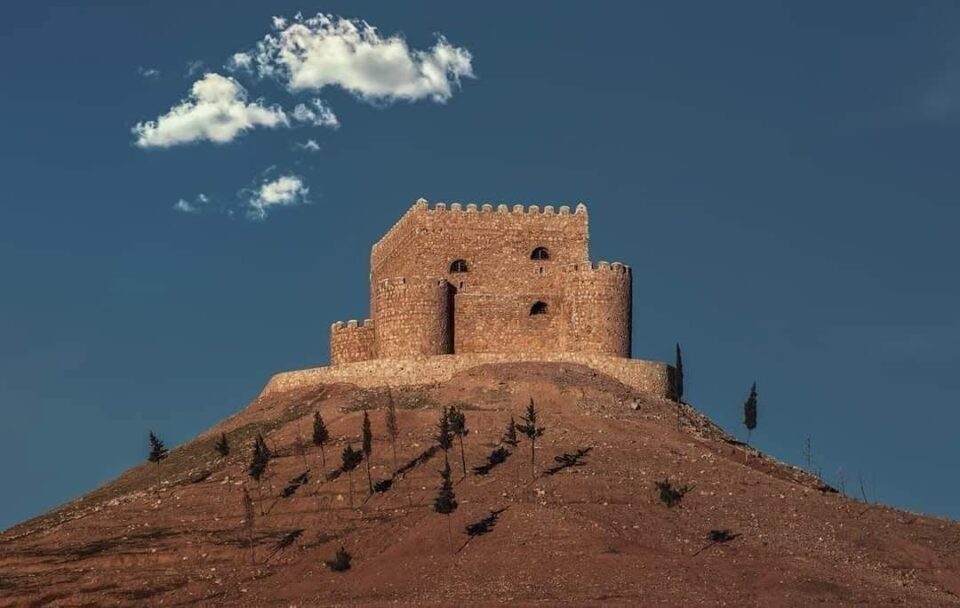Banaman Castle is one of the most important historical and cultural landmarks in Erbil Governorate, built according to traditional Kurdish architectural principles. Located along the Erbil-Pirmam road near Bansman village, the castle is believed to have been constructed during the era of the Soran Emirate. While Iraqi antiquities law typically classifies structures under 200 years old as cultural heritage sites, the age and significance of Banaman Castle have elevated it to the status of an archaeological site.
Location and Features
Situated about 22 kilometers from central Erbil, Banaman Castle rises 40 meters above the surrounding landscape, offering impressive views of the region. The fortress has preserved much of its historical integrity over the years and remains a popular tourist destination. Visitors can access the site free of charge and enjoy an improved pathway leading up to the castle. Modern lighting systems have been installed to enhance the castle’s appearance, particularly at night, and security guards are stationed to ensure the protection of this valuable site.
Historical Background
Banaman Castle is believed to have been built during the reign of Mir Muhammad Pasha, the ruler of the Soran Emirate from 1813 to 1834, with some sources citing 1827 as the year of its construction. However, the exact date remains uncertain. Contrary to some claims, the castle was not built during the reign of Princess Khanzad of Soran, who ruled in the 17th century. Princess Khanzad’s capital was at Harir Plain, and her fortress was located at Khanzad Castle on Bani Harir Mountain.
The castle was initially constructed as a military fortification, part of Mir Muhammad’s strategy to expand the Soran Emirate. To support this effort, several other castles and military centers were built in the region. Archaeological findings located about 500 meters below the castle indicate that a significant settlement existed in the area during the 17th and 18th centuries, with ancient cemeteries discovered nearby. This area has since been transformed into the Pirmam Highway, though urban development has impacted parts of the historical site.
Construction and Materials
The castle was primarily built using natural stone, with binding agents such as gypsum, lime, and ash. This combination created a fermentation-like effect, which strengthened the structure and helped prevent water infiltration. The castle’s durable construction materials have allowed it to endure for nearly two centuries, despite the challenges of time and weather.
Recent History
After the fall of Mir Muhammad’s rule, the Ottoman Empire regained control over Erbil, Rawanduz, and Koye, former territories of the Soran Emirate, and the castle fell into neglect. It wasn’t until the establishment of the Iraqi monarchy in 1921 that Banaman Castle was repurposed as a military base and registration center, undergoing renovations at that time.
Modern Restoration and Tourism
In recent years, particularly since its restoration in 2005, Banaman Castle has become a popular tourist destination. As part of the Kurdistan Regional Government’s ninth cabinet initiative to develop tourism and preserve historical sites, significant improvements have been made to the castle. These enhancements include the construction of safe pathways for vehicles and pedestrians, as well as the installation of modern lighting that highlights the castle’s beauty at night, creating a captivating atmosphere for visitors.
Today, Banaman Castle stands as a testament to Kurdish history, with its four circular towers and two-story structure built from stone and lime. Located on the Erbil-Shaqlawa road in eastern Erbil, the castle remains an important cultural and architectural landmark, offering visitors a glimpse into the rich heritage of Kurdistan.
By Muaiyad Ahmed

